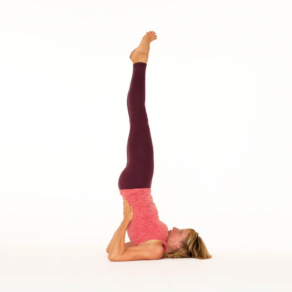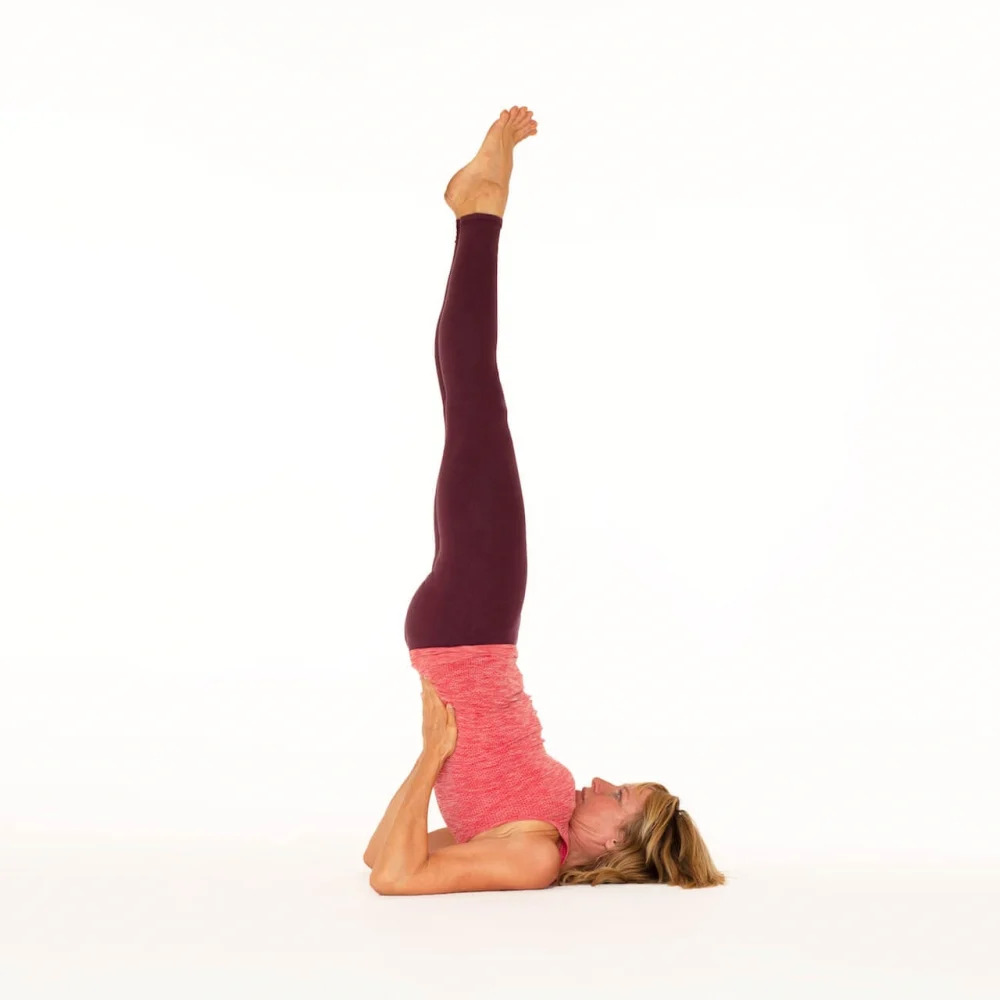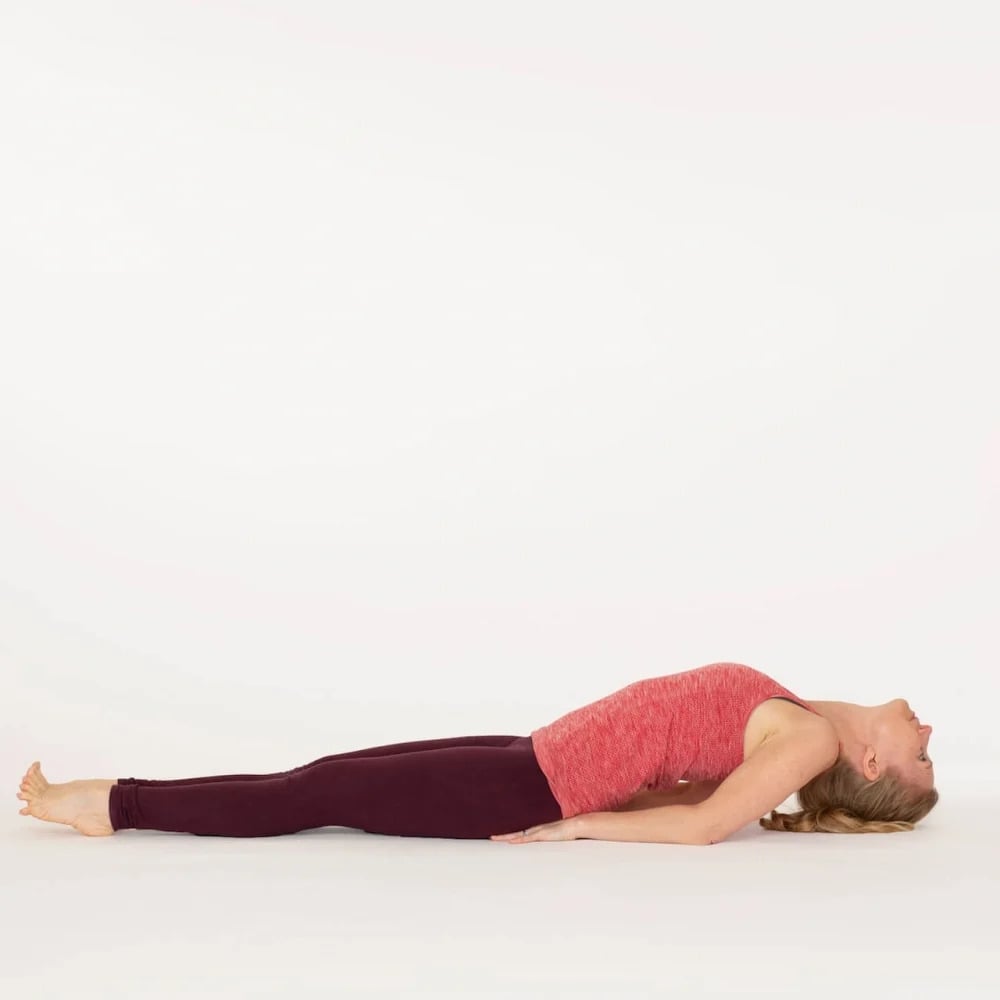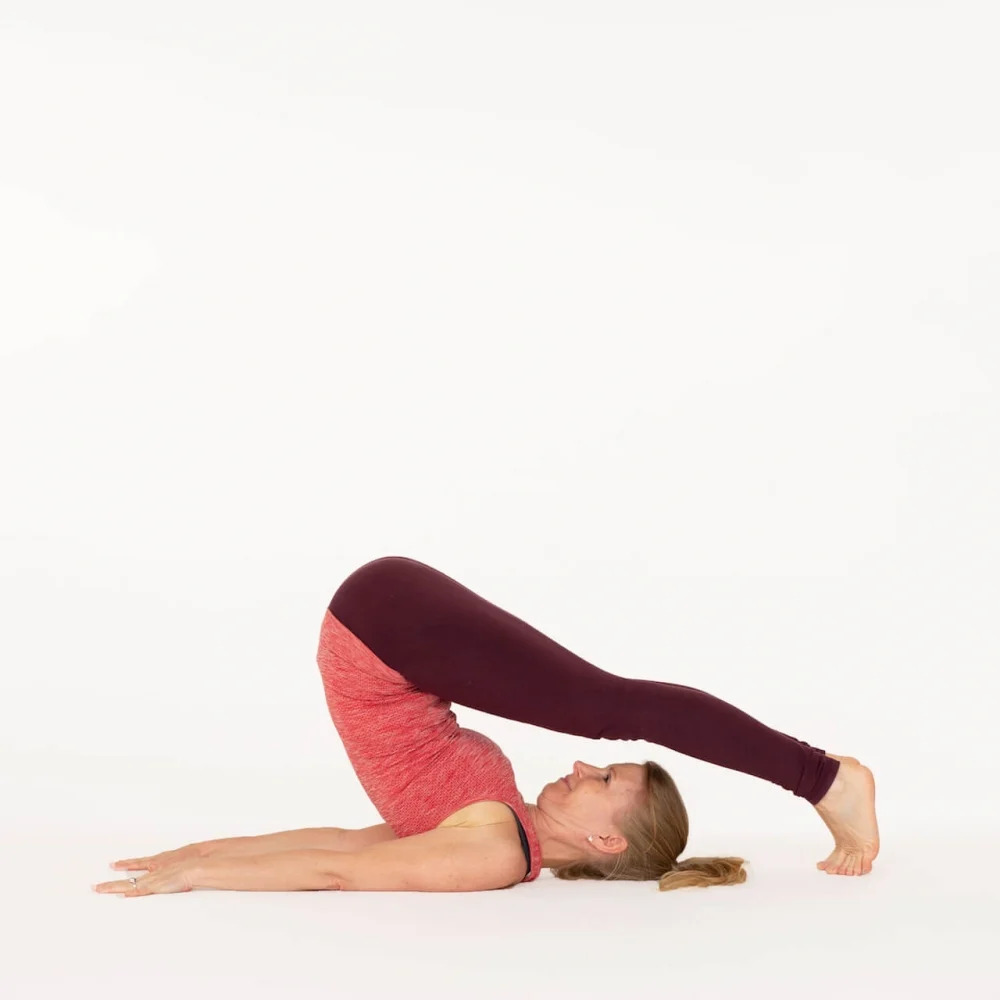Step by step
- Lie on your back with your upper back on a sturdy folded blanket. Your head is resting on the mat, so the blanket ends in the hollow of your neck. Legs are either outstretched or knees bent. Arms are next to your body with the palms down.
- Push your lower back into the floor as you exhale and on an inhale lift your legs up, while you press your arms and palms into the floor.
- Sweep your legs over your head, and use that momentum to curl the hips up and off the floor. Roll on your back, bringing the weight towards your upper back and shoulders.
- Bend your elbows and place your palms on your back for support.
- Stretch your legs up towards the ceiling. Draw your elbows in towards each other, and walk your hands up your back, towards the upper back to help lift your spine off the floor. Open your chest and draw your shoulder blades in.
- Slightly draw your thighs towards each other and keep most of weight in your upper back and arms.
- Relax your face and throat, gaze at your chest and guide your breathe towards your belly. You can start by staying in this pose for 30 seconds and build up the time from there if you wish.
- To come out, lower your legs towards the floor to about a 45-degree angle. Then roll your spine slowly and carefully back to the floor (with knees bent if you prefer), eventually placing your feet on the floor.
Beginners’ tips
- When you are practising Shoulderstand don’t be afraid of using lots of props to raise your shoulders and upper back. The most important thing in Shoulderstand is to take care of your neck.
- You can bring your legs to a 45 degree angle instead of pointing them upwards to the ceiling.
- Be aware of the position of your elbows – roll your upper arms outwards to prevent your elbows from splaying out to the sides.
- Keep your core engaged to help lift your hip and allow your hands to walk further up your back for support.
Benefits
- Stretches the shoulders and neck.
- Cooling, calming, quietens the nervous system.
- Reduces fluid retention in the legs and feet Regulates and normalises elimination.
- The thyroid and para-thyroid are nourished with blood.
- Reduces fatigue and can help you to improve your sleep.
- Improves digestion.
Watch out for
- Keep your gaze straight – don’t turn your head to look at a teacher or video.
- Do not attempt this pose if you have any type of neck injury. You can substitute it with Legs up the wall pose.
- Shoulderstand does not suit all body types because of the angle of the neck – we recommend using props for most people and to practise it under the supervision of a teacher if you are a beginner.
Variations
- Variations can be explored with the leg positions – for example scissoring the legs slowly backwards and forwards, or opening the legs out to the sides.
- Bring the legs into Lotus position while in Shoulderstand for Padma Sarvangasana.





